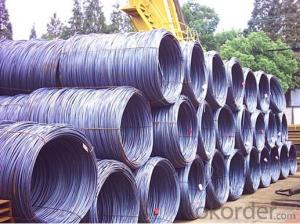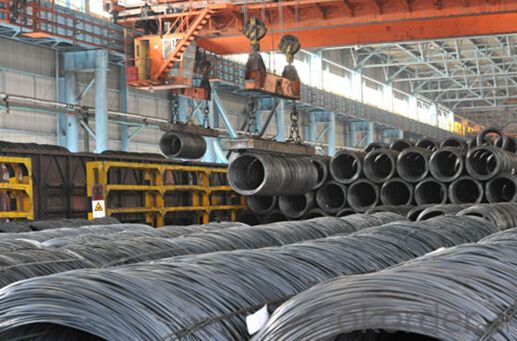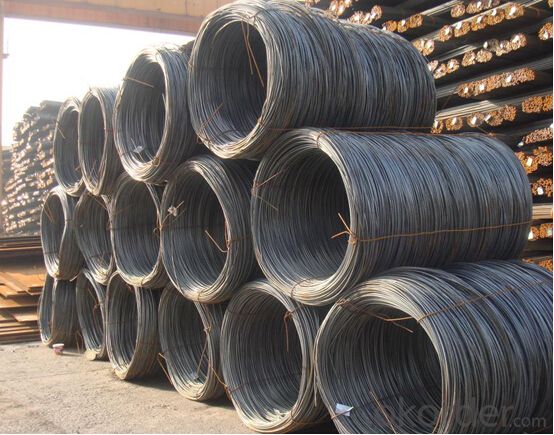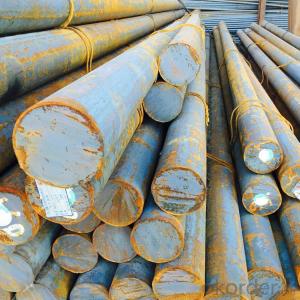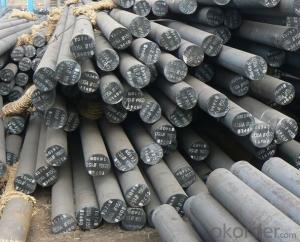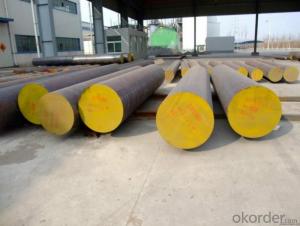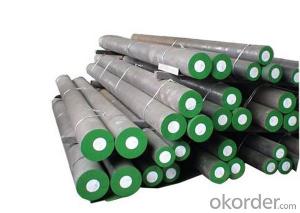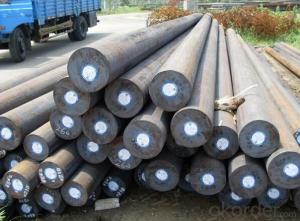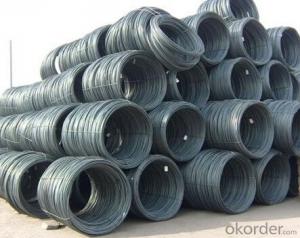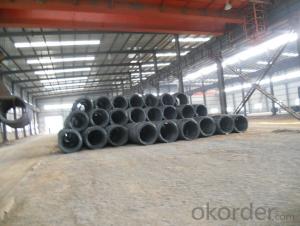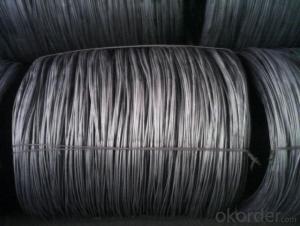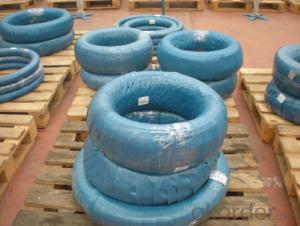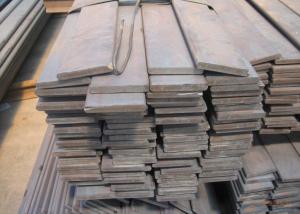SS400 SAE1008 SAE1006 Hot Rolled Wire Rods SAE1018 Q235 Q195
- Loading Port:
- Tianjin
- Payment Terms:
- TT OR LC
- Min Order Qty:
- 3 m.t.
- Supply Capability:
- 10000 m.t./month
OKorder Service Pledge
Quality Product, Order Online Tracking, Timely Delivery
OKorder Financial Service
Credit Rating, Credit Services, Credit Purchasing
You Might Also Like
Specification
Type:
Carbon Steel,Spring Steel,Bearing Steel,Gear Steel,Deformed Steel,Stainless Steel,Alloy Steel
Shape:
Steel Coil,Steel Sheet,Steel Wire Rod,Steel Flat Bar,Steel Square Bar,Steel Angle,Steel Round Bar,Steel Billets
Technique:
Hot Rolled,Cold Rolled,Cold Drawn,ERW,Forged,Saw,Extruded,EFW,Spring
Surface Treatment:
Galvanized,Coated,Copper Coated,Color Coated,Oiled,Dry,Chromed Passivation,Polished,Bright,Black,PVDF Coated
Certification:
ISO,SGS,BV,IBR,RoHS,CE,API,BSI,UL
Thickness:
5.5-42mm
Width:
5.5-42mm
Length:
In coils
Outer Diameter:
5.5-42mm
Net Weight:
2m.t.
Packaging:
Seaworthy packaging
SS400 SAE1008 SAE1006 Hot Rolled Wire Rods SAE1018 Q235 Q195
Detailed Information of the SS400 SAE1008 SAE1006 Hot Rolled Wire Rods SAE1018 Q235 Q195
| Name | Hot Rolled High Carbon Wire Rod |
| Shape | Round Bar/Square Bar/Flat Bar/Plate/Wire |
| Standard | GB/ASTM/SAE/AISI/DIN/JIS/EN/BS |
| Surface Treatment: | Black/Peeling/Polished/Machined |
| Delivery Condition: | Hot Rolled or Forged/Peeled or Black Surface |
| Test | SGS/UT 100% Elements Testing |
| Certificate: | ISO/Mill Certificate |
| Service: | 24 hours online service / |
| more than 20 years trading and manufacture | |
| Quality Assurance: | the third party inspection, such as SGS, BV, TUV…etc. is acceptable |
| Packaging Details: | Seaworthy Packaging or as per customer's packing instruction |
Chemical Composition of the SS400 SAE1008 SAE1006 Hot Rolled Wire Rods SAE1018 Q235 Q195
| Grade | Chemical Composition(%) | |||||
| C | Mn | Si | S | P | B | |
| SAE1008 | 0.1max. | 0.3~0.50 | 0.15max | 0.050max | ≤0.040 | >0.0008 |
| Mechanical properties | ||||||
| Yield strength(N/mm2) | Tensile strength(N/mm2) | Elongation(%) | ||||
| 250-280 | 350-380 | ≥32 | ||||
Company Introduction the SS400 SAE1008 SAE1006 Hot Rolled Wire Rods SAE1018 Q235 Q195
CNBM International Corporation is the most import and export platform of CNBM group(China National Building Material Group Corporation) ,which is a state-owned enterprise, ranked in 270th of Fortune Global 500 in 2015.
With its advantages, CNBM International are mainly concentrate on Cement, Glass, Iron and Steel, Ceramics industries and devotes herself for supplying high quality series of refractories as well as technical consultancies and logistics solution.

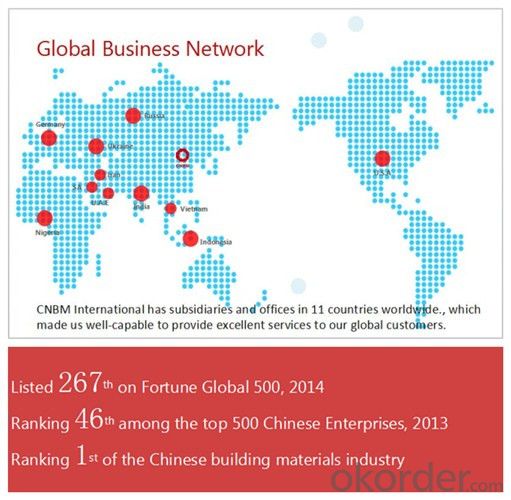
| After-sale service | CNBM provides the services and support you need for every step of our cooperation. We’re the business partners you can trust; you can relax and get on with doing business. |
| For any problem, please kindly contact us at any your convenient time, we’ll reply you in our first priority within 24 hours | |
| Advantages | Industry experience over 20 years. |
| Shipment of goods -More than 70 countries worldwide. | |
| The most convenient transport and prompt delivery. | |
| Competitive price with best service. | |
| High technical production line with top quality products. | |
| High reputation based on best quality products. |
Packaging & Delivery the SS400 SAE1008 SAE1006 Hot Rolled Wire Rods SAE1018 Q235 Q195
| Packaging Detail | Sea worthy packing /as per customer's packing instruction |
| Delivery Detail | 15 ~ 40 days after receiving the deposit |
Products Show
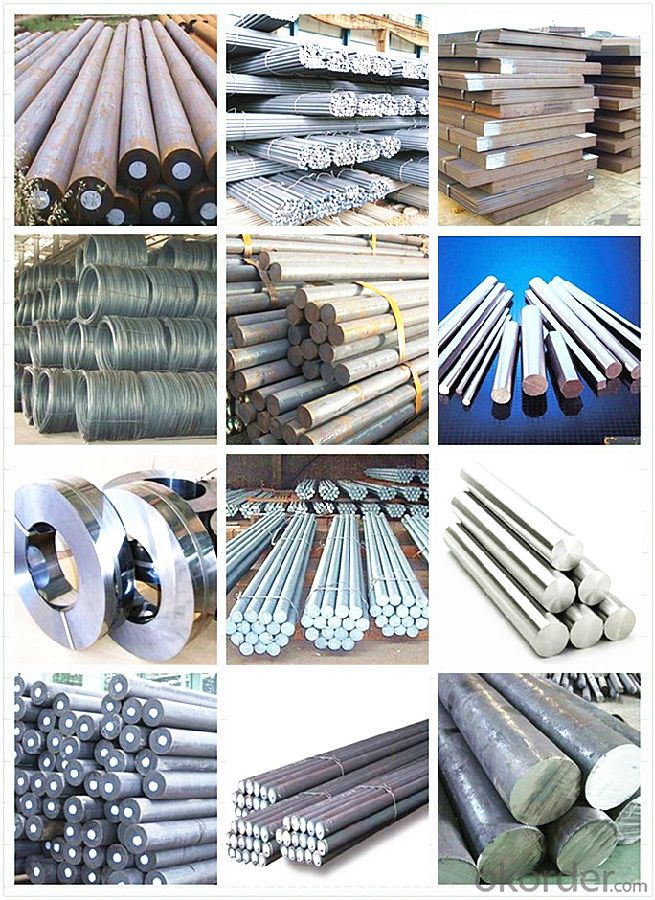
FAQ:
| Are you a trader or manufacturer? | Manufacturer |
| What’s the MOQ? | 3 metric ton |
| What’s your delivery time? | 15-35 days after downpayment received |
| Do you Accept OEM service? | Yes |
| what’s your delivery terms? | FOB/CFR/CIF |
| What's the Payment Terms? | 30% as deposit,70% before shipment by T/T |
| Western Union acceptable for small amount. | |
| L/C acceptable for large amount. | |
| Scrow ,Paybal,Alipay are also ok | |
| Why choose us? | Chose happens because of quality, then price, We can give you both. |
| Additionally, we can also offer professional products inquiry, products knowledge train (for agents), smooth goods delivery, excellent customer solution proposals. | |
| What's your available port of Shipment? | Main Port, China |
| What’s your featured services? | Our service formula: good quality+ good price+ good service=customer's trust |
| Where are your Market? | Covering more than 160 countries in the world |
- Q: What are the main factors affecting the formability of special steel?
- The formability of special steel, like any other type of steel, is influenced by several factors. These factors include the composition of the steel, its microstructure, mechanical properties, temperature, and strain rate. The composition of special steel plays a crucial role in its formability. The presence of alloying elements, such as chromium, nickel, molybdenum, and vanadium, can significantly affect the steel's ability to be formed. These elements can alter the steel's strength, ductility, and resistance to deformation. The microstructure of special steel is another key factor affecting its formability. Fine-grained steels tend to have better formability compared to coarse-grained steels. The presence of non-metallic inclusions, such as sulfides and oxides, can also influence formability by acting as stress concentrators and promoting crack formation. The mechanical properties of special steel, such as yield strength, tensile strength, and elongation, directly impact its formability. Steels with higher yield strength are generally more difficult to form, as they require greater force to deform. However, steels with high elongation can undergo larger plastic deformation before failure, making them more formable. Temperature is another critical factor affecting the formability of special steel. At elevated temperatures, the steel becomes more ductile and easier to deform. This is due to the reduction in yield strength and increased mobility of dislocations within the crystal structure. However, excessively high temperatures can also lead to grain growth, which negatively impacts formability. The strain rate, or the rate at which deformation is applied to the steel, also affects formability. Higher strain rates can cause strain hardening, where the steel becomes stronger and less formable. Conversely, lower strain rates allow for greater plastic deformation and improved formability. In conclusion, the formability of special steel is influenced by its composition, microstructure, mechanical properties, temperature, and strain rate. Understanding and optimizing these factors is essential for achieving the desired formability and shaping capabilities of special steel in various applications.
- Q: How does special steel perform in abrasive wear conditions?
- Special steel is specifically designed to perform exceptionally well in abrasive wear conditions. Its unique composition and manufacturing process make it highly resistant to the detrimental effects of abrasion. The presence of alloying elements such as chromium, manganese, and molybdenum in special steel significantly enhances its hardness and toughness. These elements help to form carbides within the steel matrix, which act as barriers against abrasion. The carbides effectively resist the forces exerted by abrasive particles, preventing them from causing significant damage to the steel surface. Furthermore, special steel undergoes specialized heat treatment processes such as quenching and tempering, which further enhance its resistance to abrasive wear. These processes not only increase the hardness of the steel but also improve its overall toughness and durability. As a result, special steel is capable of withstanding high levels of abrasion without experiencing significant wear or deterioration. In addition to its exceptional mechanical properties, special steel also exhibits excellent corrosion resistance. This is achieved through the addition of elements such as chromium, which forms a protective oxide layer on the steel surface. This oxide layer acts as a barrier, preventing corrosive substances from reaching the underlying steel and causing further damage. Overall, special steel performs exceptionally well in abrasive wear conditions. Its unique composition, heat treatment processes, and corrosion resistance properties make it an ideal material for applications where abrasion is a major concern. Whether in mining, manufacturing, or other industries where abrasive wear is prevalent, special steel can provide superior performance and extended lifespan, ensuring optimal efficiency and cost-effectiveness.
- Q: Can special steel be used for making surgical instruments?
- Yes, special steel can be used for making surgical instruments. Special steel, also known as surgical steel or medical-grade steel, is specifically designed to meet the high standards required for medical and surgical applications. It is highly resistant to corrosion, has excellent strength and durability, and can withstand repeated sterilization processes without losing its properties. Surgical instruments made from special steel are known for their precision, reliability, and ability to maintain a sharp cutting edge. These instruments are essential in various surgical procedures, including but not limited to, cutting, dissecting, manipulating, and suturing tissues. The use of special steel ensures that surgical instruments are safe, hygienic, and suitable for use in medical environments.
- Q: What are the main applications of special steel in the telecommunications sector?
- Special steel is widely used in the telecommunications sector for various applications. One of the main uses is in the manufacturing of transmission towers and antennas, where high strength and corrosion resistance properties are crucial for ensuring stability and durability. Special steel is also utilized in the production of cables and wires, providing excellent conductivity and resistance to wear and tear. Additionally, special steel is employed in the fabrication of satellite communication equipment, providing the necessary strength and resilience to withstand harsh environmental conditions. Overall, special steel plays a vital role in the telecommunications sector by enabling the construction of reliable and high-performance infrastructure.
- Q: What are the different methods of surface carburizing for special steel?
- Surface carburizing is a heat treatment process used to increase the carbon content at the surface of steel, resulting in a hardened outer layer. There are several methods of surface carburizing for special steel, each with its own advantages and disadvantages. 1. Gas Carburizing: This method involves exposing the steel to a carbon-rich gas, such as methane or propane, at elevated temperatures. The gas reacts with the steel surface, depositing carbon and forming a hardened layer. Gas carburizing is a widely used method due to its versatility, controllability, and ability to produce uniform and deep case depths. However, it requires specialized equipment and longer processing times. 2. Pack Carburizing: In this method, the steel is packed in a container with a carbon-rich material, such as charcoal or carbon powder. The container is then heated to high temperatures, allowing carbon to diffuse into the steel surface. Pack carburizing is a cost-effective method, but it is relatively slower and less controllable compared to gas carburizing. 3. Liquid Carburizing: Also known as cyaniding, this method involves immersing the steel in a liquid bath containing a carbon-rich compound, such as sodium cyanide. The bath is heated to high temperatures, which enables carbon diffusion into the surface of the steel. Liquid carburizing is a fast and cost-effective method, but it requires careful handling of toxic chemicals and may result in lower case depths compared to other methods. 4. Plasma Carburizing: This method utilizes a plasma discharge to provide a carbon-rich atmosphere around the steel surface. The plasma contains hydrocarbons, which dissociate into carbon atoms that diffuse into the steel. Plasma carburizing offers precise control over case depth and can achieve high surface hardness. However, it requires specialized equipment and is generally more expensive than other methods. 5. Salt Bath Carburizing: In this method, the steel is immersed in a molten salt bath containing carbon-rich compounds. The salt bath is heated to high temperatures, allowing carbon to diffuse into the steel surface. Salt bath carburizing is a versatile method that can achieve high case depths and excellent surface hardness. However, it requires careful temperature control and can be challenging to remove the salt residues after the process. It is important to select the appropriate method of surface carburizing based on the specific requirements of the special steel, such as desired case depth, hardness, and cost considerations.
- Q: What are the different joining processes for special steel?
- There are several different joining processes for special steel, including welding, brazing, and soldering. Welding involves melting the base metals and adding a filler material to create a strong bond. Brazing involves heating the base metals and using a filler material with a lower melting point to join them together. Soldering is a similar process to brazing, but it uses a filler material called solder with an even lower melting point. These joining processes are used to create durable and reliable connections in special steel applications.
- Q: How does special steel contribute to the defense machinery industry?
- Special steel contributes to the defense machinery industry by providing superior strength, durability, and resistance to corrosion. This type of steel is specifically designed to meet the demanding requirements of military applications, ensuring that defense machinery can withstand harsh environments, extreme temperatures, and heavy use. By utilizing special steel, the defense industry can produce high-performance weapons, vehicles, and equipment that are essential for national security and defense capabilities.
- Q: How does special steel contribute to reducing product weight?
- Special steel contributes to reducing product weight through its unique properties. Special steel is known for its high strength-to-weight ratio, which means it can provide the same level of strength and durability as other materials while being significantly lighter. By using special steel in the manufacturing process, products can be designed with thinner and lighter components without compromising their structural integrity. This reduction in weight not only makes the product more portable and easier to handle, but it also helps in reducing transportation costs and improving fuel efficiency in industries such as automotive and aerospace.
- Q: What are the requirements for special steel used in aircraft manufacturing?
- The requirements for special steel used in aircraft manufacturing are quite stringent due to the critical nature of the components and the demanding operating conditions in which they are subjected. Here are some key requirements: 1. High strength: Special steel used in aircraft manufacturing must possess exceptional strength to withstand the extreme forces and loads experienced during flight. This ensures the structural integrity and safety of the aircraft. 2. Lightweight: While strength is crucial, special steel for aircraft must also be lightweight to minimize the overall weight of the aircraft. This helps enhance fuel efficiency and allows for increased payload capacity. 3. Corrosion resistance: The steel must exhibit excellent resistance to corrosion, as aircraft are often exposed to harsh environments, including high humidity, saltwater, and various chemicals. Corrosion resistance helps maintain the structural integrity and prolong the lifespan of the aircraft. 4. Fatigue resistance: Special steel must have high fatigue resistance to withstand repetitive loading and unloading cycles that occur during flight. This ensures that the components do not fail prematurely due to cyclic stress. 5. Heat resistance: The steel should be able to withstand high temperatures generated by the engines, as well as the heat generated during high-speed flight. Heat resistance prevents deformation, melting, or loss of strength under extreme thermal conditions. 6. Weldability: Special steel used in aircraft manufacturing should possess good weldability, allowing for efficient and reliable joining of components during the manufacturing process. This ensures strong and secure connections between various parts of the aircraft. 7. Non-magnetic properties: In certain applications, such as electronic systems, it is essential for the steel to be non-magnetic to prevent interference with sensitive equipment. 8. Traceability and certification: The steel must have proper traceability and certification to meet industry standards and regulatory requirements. This includes documentation of the steel's composition, manufacturing process, and testing procedures to ensure consistent quality and performance. Meeting these requirements is essential to ensure the safety, reliability, and efficiency of aircraft. Special steel used in aircraft manufacturing undergoes rigorous testing, quality control, and certification processes to ensure it meets these stringent requirements before being used in the construction of aircraft components.
- Q: How does special steel perform in terms of magnetic permeability?
- Special steel has a relatively low magnetic permeability, making it less prone to magnetization and allowing it to resist the effects of external magnetic fields.
Send your message to us
SS400 SAE1008 SAE1006 Hot Rolled Wire Rods SAE1018 Q235 Q195
- Loading Port:
- Tianjin
- Payment Terms:
- TT OR LC
- Min Order Qty:
- 3 m.t.
- Supply Capability:
- 10000 m.t./month
OKorder Service Pledge
Quality Product, Order Online Tracking, Timely Delivery
OKorder Financial Service
Credit Rating, Credit Services, Credit Purchasing
Similar products
Hot products
Hot Searches
Related keywords
